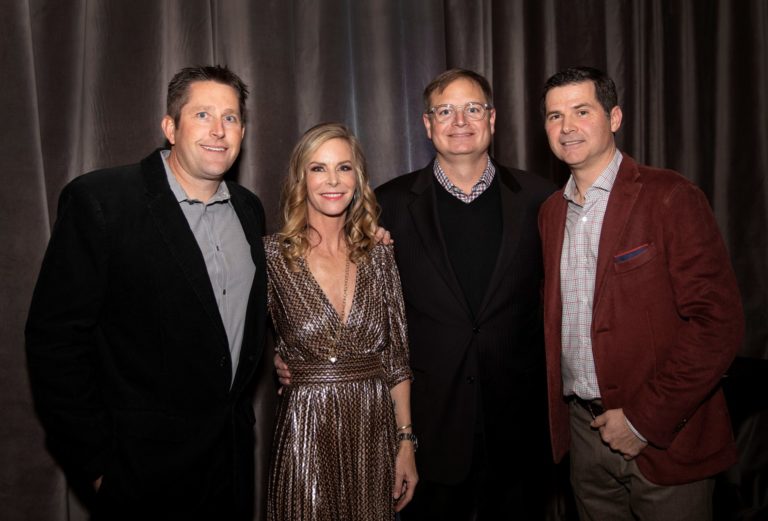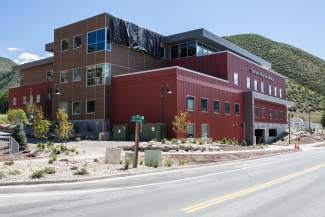MIRA: A Deeper Definition of Health Equity in the Vail Valley
This article first appeared in the Vail Daily on October 12, 2019.

Special to the Daily
Melina Valsecia said her experience as an immigrant in Eagle County helped her understand the need for a new way of looking at how service providers engage with the growing Latino population, many of whom are first- or second-generation immigrants.
“I am an immigrant and we, as immigrants, we have all left our homes behind. So that feeling of ‘oh we don’t belong here’ is always present,” said Valsecia, a manager and customer connector for MIRA, a join community health project between Eagle County Public Health, Vail Health and Eagle Valley Community Foundation. “We need to work constantly on belonging here and I don’t think many other people know what that is like, to be in survival mode 24/7.
“This process of acculturation is accompanied by stress when you come and live in Eagle County. We feel we are constantly competing between the sets of norms and values that we bring in and learning how to navigate a new social environment.”
According to Valsecia, that position allowed her to see even more clearly the stark differences between how organizations serve tourists in Eagle County and how they serve their own diverse communities.
“When I got to this country, I had a bachelor’s degree but I couldn’t use it so I ended up working in one of the hotels, like everybody else,” Valsecia said. “Eventually, I worked my way up to being a Latina guest services manager of a hotel in Beaver Creek.”
She added: “I saw how companies put a lot of effort into training people to do that kind of work and to serve those populations. But professional development around how to serve our own community, or specifically the Latinx community, doesn’t exist.”
Valsecia then posed a question: “Think about where we are at, how we live our lives and where we get information from. Are professionals acknowledging their customers’ cultural, environmental and socio-economic situation?”
According to U.S. Census Bureau data, Hispanic or Latinx people — a gender-neutral neologism to refer to people of Latin American cultural or racial identity in the United States — make up just under one-third of Eagle County’s population. Approximately 18% of Eagle County residents are first-generation immigrants. According to a study done by Eagle County Schools, 52% of students in our district identify as Hispanic.

Special to the Daily
Valsecia said that without more representation and inclusivity, a large portion of our community may be stuck feeling as though they do not belong here and they may pass those feelings on to their children.
“That feeling of belonging is really important to start healing,” she said. “For me, as an immigrant, if we have one place where they can just come and talk, we can improve their overall health and encourage a discussion on how we can make this place feel like home for everyone.”
Public health: Prevention and Progress
The MIRA Bus is a large RV that travels into underserved communities throughout Eagle County and offers resources, referrals and services related to public health. MIRA is an acronym which stands for Mobile Intercultural Resource Alliance.
“At MIRA, we are a mobile resource,” Valsecia said. “Many organizations join us as we travel to different neighborhoods and the RV serves as an office space for delivering services and resources that exist within the community that people might not know about or that they might have barriers to access.”
Valsecia said it is very important to her that MIRA’s services be open and accessible for everyone.
“We are a bilingual staff, we require organizations to bring interpretation services or to bring every material in both Spanish and English at least,” Valsecia said. “As a community, we need to rethink the process of how to better reach out to the people we want to reach.”
The MIRA Bus is a resource working to improve public health by addressing the social determinants of health. Rather than focusing on reactionary medical care, public health deals more in areas of prevention. This means that MIRA’s services are focused on promoting healthy living and addressing health concerns before problems arise, Valsecia said.

Special to the Daily
“So sometimes those services are medical, sometimes it’s dental services and this time of the year we’re focusing on the flu shots,” she said.
Last year, the MIRA Bus gave out 527 flu shots — almost double the number of flu shots given out at non-mobile sites around the county. In the first two weeks of the flu shot clinic this year, the MIRA Bus has already given out 450 shots with the support of service providers from Eagle County Public Health.
“From my perspective when I’m inside the bus, I can see a line of people in the bus waiting for a flu shot. I look outside and I can see The Community Market and people getting food,” Valsecia said. “So in one minute of the day that MIRA is out in the community, we can be helping so many different people and providing so many different services all at once.”
Valsecia described this scene as a kind of “farmer’s market of free services for the community” and said that bringing different service providers together in one location is essential to creating a deeper sense of community togetherness. One service provider, Maria Burciaga of the Eagle Valley Outdoor Movement, agreed.
“MIRA has provided EVOM and all other partners with the opportunity to meet families where they live, creating a perfect opportunity to make connections, build trust, and provide a space where conversations between community members and local organizations are happening,” Burciaga said.
“This also creates the opportunity for individuals to feel like they belong in this community as they become more and more aware of what is out there,” she added.
Social determinants of health
“On MIRA, we are really interested in deepening our understanding of some of the social determinants of health,” Valsecia said. “It could be transportation, it could be food, it could be education, childcare … We believe that addressing these smaller things one at a time is what will allow our customers to have a better life.”
According to Valsecia, in order to take a preventative approach to address some of the social determinants of health, you need to start by doing a lot of listening and understanding.
“To me, it’s really clear. If you really want to help the community, you need to be with the community — not just one day a year, but all the time,” Valsecia said. “We just wait for them to express what they need … And then from there, we can start building the relationship and the trust so we can make recommendations on how to navigate systems.”
Social determinants of health can be thought of as the social and economic factors which may cause disparities in the health of certain individuals or populations. According to Valsecia, in order to address the social determinants of health, organizations will have to make a stronger commitment to advancing health equity.

Special to the Daily
“I think it all comes down to equity,” she said. “Everyone needs a different set of steps to see behind the fence, right? We’re trying to help our customers find equity by giving them the tools to be able to find solutions more efficiently.”
Strong community systems
Valsecia said that organizations should place a larger emphasis on building “strong community systems” and utilizing the unique skills of people within the communities they want to serve.
“Really serving our diverse community is challenging and we need more investment,” she said. “It’s about changing the way organizations think and their leadership style.”
Valsecia stressed the importance that all Eagle County residents, not just service providers, try to be more open-minded in building community across social, cultural and economic differences.
“Whether you’re an immigrant or you grew up here, we are all living here for a lot of the same reasons,” she said. “People live here because they like the environment, it’s beautiful, it’s peaceful, we are surrounded by friendly people and mountains. But when people settle and find places to live, we can see that there are disparities and there are very real consequences to that.”
Valsecia said that it can be difficult for people to reach across social divides, but that continuously striving to do so is essential to making our community strong and whole.
“I think sometimes people don’t know how to get closer to other members of their community across those divides,” she said. “With MIRA, in the beginning, I feel like people were coming and they were kind of shy or ashamed to talk or express their needs and they were not really talking to each other.”
According to Valsecia, that initial environment has changed dramatically in the last year that MIRA has been operating.
“Now, it’s like there’s kids everywhere and there’s games sometimes and snacks so it’s more about gathering,” she said. “I’m glad to have created an environment where people can get answers, and it’s very easygoing. We just see people and say hey and they come over and start friendly conversations with their neighbors and we talk about how we can help them.”
For more information about how the MIRA Bus is serving our community or to get involved, contact Melina Valsecia at resourcebusmira@gmail.com.
Kelli Duncan is a marketing and volunteer coordinator with The Community Market, a project of Eagle Valley Community Foundation.


